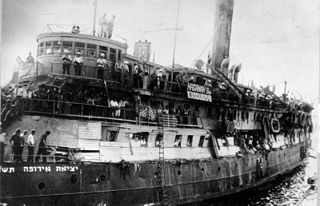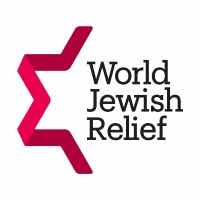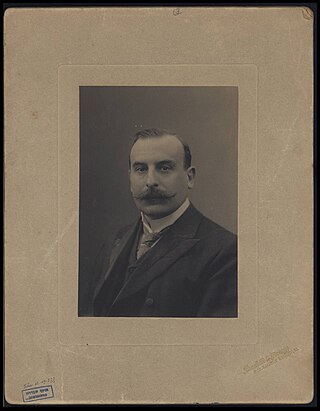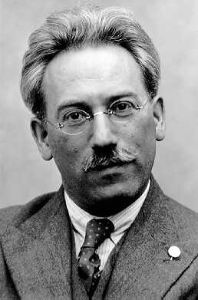
The Balfour Declaration was a public statement issued by the British Government in 1917 during the First World War announcing its support for the establishment of a "national home for the Jewish people" in Palestine, then an Ottoman region with a small minority Jewish population. The declaration was contained in a letter dated 2 November 1917 from the United Kingdom's Foreign Secretary Arthur Balfour to Lord Rothschild, a leader of the British Jewish community, for transmission to the Zionist Federation of Great Britain and Ireland. The text of the declaration was published in the press on 9 November 1917.

Zionism is an ethnocultural nationalist movement that emerged in Europe in the late 19th century and aimed for the establishment of a national home for the Jewish people through the colonization of Palestine, an area roughly corresponding to the Land of Israel in Judaism, and of central importance in Jewish history. Zionists wanted to create a Jewish state in Palestine with as much land, as many Jews, and as few Palestinian Arabs as possible.

Chaim Azriel Weizmann was a Russian-born Israeli statesman, biochemist, and Zionist leader who served as president of the Zionist Organization and later as the first president of Israel. He was elected on 16 February 1949, and served until his death in 1952. Weizmann was instrumental in obtaining the Balfour Declaration of 1917 and convincing the United States government to recognize the newly formed State of Israel in 1948.

The Jewish aspiration to return to Zion, generally associated with divine redemption, has suffused Jewish religious thought since the destruction of the First Temple and the Babylonian exile.

Revisionist Zionism is a form of Zionism characterized by territorial maximalism. Revisionist Zionism promoted expansionism and the establishment of a Jewish majority on both sides of the Jordan River.

The World Zionist Organization, or WZO, is a non-governmental organization that promotes Zionism. It was founded as the Zionist Organization at the initiative of Theodor Herzl at the First Zionist Congress, which took place in August 1897 in Basel, Switzerland. The goals of the Zionist movement were set out in the Basel Program.

Cultural Zionism is a strain of Zionism that focused on creating a center in historic Palestine with its own secular Jewish culture and national history, including language and historical roots, rather than other Zionist ideas such as Political Zionism. The founder of Cultural Zionism is Asher Ginsberg, better known as Ahad Ha'am. With his secular vision of a Jewish "spiritual center" in Eretz Israel/Palestine, he confronted Theodor Herzl. Unlike Herzl, the founder of political Zionism, Ha'am strove for "a Jewish state and not merely a state of Jews".

The First Zionist Congress was the inaugural congress of the Zionist Organization (ZO) held in the Stadtcasino Basel in the city of Basel on August 29–31, 1897. Two hundred and eight delegates and 26 press correspondents attended the event. It was convened and chaired by Theodor Herzl, the founder of the modern Zionism movement. The Congress formulated a Zionist platform, known as the Basel program, and founded the Zionist Organization.

The Central British Fund for World Jewish Relief, formerly Central British Fund for German Jewry, (CBF) which currently operates under the name World Jewish Relief (WJR), is a British charitable organisation and the main Jewish overseas aid organisation in the United Kingdom.

Zionist Commission for Palestine was a commission chaired by Chaim Weizmann, president of the British Zionist Federation following British promulgation of the pro-Zionist, Balfour Declaration. The Commission was formed in March 1918 and went to Palestine to study conditions and submit recommendations to the British authorities.
As an organized nationalist movement, Zionism is generally considered to have been founded by Theodor Herzl in 1897. However, the history of Zionism began earlier and is intertwined with Jewish history and Judaism. The organizations of Hovevei Zion, held as the forerunners of modern Zionist ideals, were responsible for the creation of 20 Jewish towns in Palestine between 1870 and 1897.

L. J. Greenberg, born Leopold Jacob Greenberg (1861–1931), was a British journalist. He had become an energetic propagandist of the new Zionism in England by the Third Zionist Congress in 1899, at which he and Jacob de Haas were elected as members of the ZO's Propaganda Committee. His frequent dialectical debates were conducted as editor of The Jewish Chronicle, the leading paper in Britain for the Jewish community. Greenberg called for decency and humanity towards World Jewry.

During the British rule in Mandatory Palestine, there was civil, political and armed struggle between Palestinian Arabs and the Jewish Yishuv, beginning from the violent spillover of the Franco-Syrian War in 1920 and until the onset of the 1948 Arab–Israeli War. The conflict shifted from sectarian clashes in the 1920s and early 1930s to an armed Arab Revolt against British rule in 1936, armed Jewish Revolt primarily against the British in mid-1940s and finally open war in November 1947 between Arabs and Jews.

The common definition of Zionism was principally the endorsement of the Jewish people to establish a Jewish national home in Palestine, secondarily the claim that due to a lack of self-determination, this territory must be re-established as a Jewish state. Historically, the establishment of a Jewish state has been understood in the Zionist mainstream as establishing and maintaining a Jewish majority. Zionism was produced by various philosophers representing different approaches concerning the objective and path that Zionism should follow. A "Zionist consensus" commonly refers to an ideological umbrella typically attributed to two main factors: a shared tragic history, and the common threat posed by Israel's neighboring enemies.

Shlomo Kaplansky was a Labour Zionist politician, who served as the secretary of the World Union of Poalei Zion. During the 1920s he was a leading advocate of a bi-national state in Palestine. Kaplansky was the President of the Technion – Israel Institute of Technology.

The London Conference of 1939, or St James's Palace Conference, which took place between 7 February – 17 March 1939, was called by the British Government to plan the future governance of Palestine and an end of the Mandate. It opened on 7 February 1939 in St James's Palace after which the Colonial Secretary, Malcolm MacDonald held a series of separate meetings with the Arab Higher Committee and Zionist delegation, because the Arab Higher Committee delegation refused to sit in the same room as the Zionist delegation. When MacDonald first announced the proposed conference he made clear that if no agreement was reached the government would impose a solution. The process came to an end after five and a half weeks with the British announcing proposals which were later published as the 1939 White Paper.

Poale Zion was a movement of Marxist–Zionist Jewish workers founded in various cities of Poland, Europe and the Russian Empire at about the turn of the 20th century after the Bund rejected Zionism in 1901.

The One Million Plan was a strategic plan for the immigration and absorption of one million Jews from Europe, the Middle East, and North Africa into Mandatory Palestine, within a timeframe of 18 months, in order to establish a state in that territory. After being voted on by the Jewish Agency for Palestine Executive in 1944, it became the official policy of the Zionist leadership. Implementation of a significant part of the One Million Plan took place following the establishment of the State of Israel in 1948.

The London Conference of 1946–1947, which took place between September 1946 and February 1947, was called by the British Government of Clement Attlee to resolve the future governance of Palestine and negotiate an end of the Mandate. It was scheduled following an Arab request after the April 1946 Anglo-American Committee of Inquiry report.


















